The Jewish Temple in Contemporary Christian
Zionism 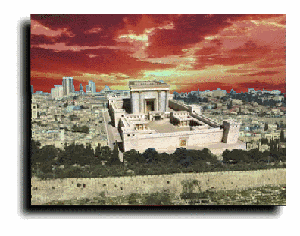
On January 8, 2001, former Shin Bet secret service chief
Carmi Gillon and former police commissioner Assaf Hefetz together with leading
Israeli academics delivered a report to the then Israeli Prime Minister Ehud
Barak detailing their concerns regarding plots by Jewish extremist groups to
blow up the Dome of the Rock and Al-Aqsa Mosque.1 Keshev, the Centre for the Protection of
Democracy based in Tel Aviv, founded by Gillon and Hefetz following the
assassination of Rabin, published a 12 page report entitled, "Target Temple
Mount" which examined current threats to the Temple Mount from extreme militant
and Messianic groups. The report claimed, 'The Temple Mount is like a
smouldering volcano that is bubbling and threatening to erupt - a threat that is
liable to endanger Israel's existence.'2 In 1999, the US Anti-Defamation League
(ADL) included Gershon Salomon, leader of the Temple Mount Faithful, on a list
of "threats to (US) national security."3
On the 8th January 2001, 500,000 secular, religious and
ultra-Orthodox Jews gathered near the Temple Mount at the Western Wall, 'and
swore faithfulness to the Temple Mount and Jerusalem.'4 In July 2001 the Rabbinical Council of
Judea, Samaria and Gaza called on all rabbis to bring their communities to visit
the Temple Mount. This was the first time a group of rabbis representing a
significant proportion of the religious Jewish community had ruled it
permissible for Jews to ascend the Temple Mount. Previously this had been
forbidden. The rabbis also called upon the Yesha Council of Jewish settlements
to organise mass visits to the Temple Mount from the settlements. Settlement
residents tend to be the more politically right wing religious Jews.5 During the same month, the Israeli
Supreme Court made a
significant decision, once again, for the first time, allowing the Temple Mount
Faithful to hold a symbolic cornerstone laying ceremony for the Third Temple
near the Dung Gate adjacent to the Western Wall. Each year attempts are made by
the Temple Mount Faithful to place a three ton stone on the Temple Mount on
Tisha b'Av (29th July) when the Jews mourn the destruction of the first and
second Temples and also during the Feast of Sukkoth (usually early October).6 Muslims see this as further indication
that Zionists are attempting to take the Temple Mount area by force, destroy the
Dome of the Rock and rebuild the Jewish Temple on the site.7
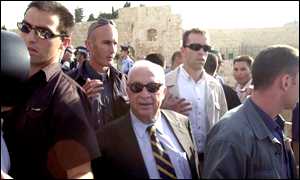
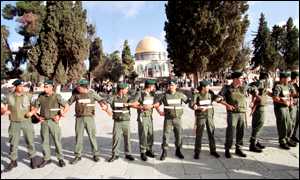
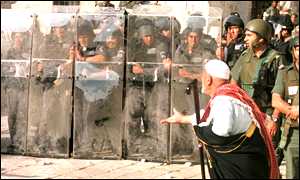
This paper will examine the reasons why Christian Zionists believe
so passionately that the rebuilding of the Jewish Temple is imminent and
actively support those committed to achieving it.8 Belief in a rebuilt Jewish temple lies
at the heart of the controversy concerning the claim to exclusive Jewish
sovereignty over Jerusalem as well as the expansion of the borders of Israel to
include not only the Palestinian Territories but, based on the literal
fulfilment of Genesis 15:18, most of the Middle East from Egypt to the
Euphrates.9
We should not forget... that the supreme purpose of the
ingathering of exiles and the establishment of our state is the building of
the temple. The temple is at the very top of the pyramid.10
It is all a matter of sovereignty. He who controls the
Temple Mount, controls Jerusalem. And he who controls Jerusalem, controls the
land of Israel.11
Using an analogy of three concentric rings, the Land
represents the outer ring, Jerusalem the middle and the Temple the centre. The
three rings comprise the Zionist expansionist agenda of which the outer was
claimed in 1948, the middle in 1967 and the inner now under heightened threat.
1. Introduction :
The Temple of Prayer
The Importance of the Temple to Jews and
Zionist Christians
For the past 19 centuries,
religious Jews have prayed three times a day, "May it be Thy will that the
Temple be speedily rebuilt in our days."12 Randall Price claims that the Torah,
'obligates the Jewish nation to rebuild the Temple whenever it becomes possible
to do so (Ex 25:8).'13 However, when IDF Chaplain Rabbi Shlomo
Goren blew the shofar and performed a religious ceremony near the Dome of the
Rock on the Temple Mount in August 1967 just days after its capture, he was
criticised by both the secular Israeli press and orthodox Jews.14 By 1989 Time Magazine reported the
findings of a survey showing that some 20 years later, 18% of Israelis thought
it was time to rebuild the Temple.15 A similar Gallup poll was conducted in
Israel in 1996 to assess opinions on the question of sovereignty over the Temple
Mount and the rebuilding the Jewish Temple. It found that 58% of Israelis now
supported the Temple Mount Faithful and therebuilding the Jewish Temple. This
was allegedly the largest show of support any organisation had ever received in
Israel on any subject. Significantly, the highest percentage of support came
from young Israelis.16 A simple Internet search of the words
'Temple Mount' reveals 351,000 pages. Add the word 'Christian' and there are
still 54,300 web pages of data.17
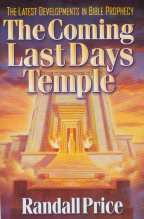 Contemporary Christian Zionists who have written on the
rebuilding of a Jewish Temple include Thomas Ice and Randall Price18, Grant Jeffrey19, Hal Lindsey20, Tim LaHaye21 and Dave Hunt.22 Their combined published book sales
exceed 70 million in more than 50 languages. Their views are therefore
influential and cannot be dismissed as marginal or esoteric. They are endorsed
by some of the largest theological colleges and missionary institutions23 as well as a significant proportion of
evangelical, Charismatic, Pentecostal and fundamentalist Christians world-wide.
Grace Halsell speculates that 10% of Americans support this movement.24
Contemporary Christian Zionists who have written on the
rebuilding of a Jewish Temple include Thomas Ice and Randall Price18, Grant Jeffrey19, Hal Lindsey20, Tim LaHaye21 and Dave Hunt.22 Their combined published book sales
exceed 70 million in more than 50 languages. Their views are therefore
influential and cannot be dismissed as marginal or esoteric. They are endorsed
by some of the largest theological colleges and missionary institutions23 as well as a significant proportion of
evangelical, Charismatic, Pentecostal and fundamentalist Christians world-wide.
Grace Halsell speculates that 10% of Americans support this movement.24
Other Christian Zionist leaders including James DeLoach,
Terry Risenhoover and Doug Kreiger have also been influential in gathering
significant American financial and political support for extreme Jewish
organisations such as Gush Emunim and the Temple Mount Faithful.25 Christian and Jewish Zionists are
united in the conviction that the Muslim Dome of the Rock must be destroyed, the
third Jewish Temple built, priests consecrated and sacrifices reinstituted in
fulfilment of biblical prophecy and to ensure the coming of Messiah.26
Christian Zionists see the founding of the State of Israel
in 1948 and the capture of Jerusalem in 1967 as highly significant, signalling
the end of 2000 years exile, and the end of the 'Times of the Gentiles'. Hal
Lindsey is regarded as the 'Father of the Modern-Day Bible Prophecy movement'27 and a leading representative of
Christian Zionists. He insists the Temple Mount is 'the most disputed 35 acres
on the Planet,'28 and the fate of the earth will be
determined by its contested ownership.29
Obstacle or no obstacle, it is certain that the Temple
will be rebuilt. Prophecy demands it... With the Jewish nation reborn in the
land of Palestine, ancient Jerusalem once again under total Jewish control for
the first time in 2600 years, and talk of rebuilding the great Temple, the
most important sign of Jesus Christ's soon coming is before us... It is like
the key piece of a jigsaw puzzle being found... For all those who trust in
Jesus Christ, it is a time of electrifying excitement.30
Since the 1960's, I have been writing and saying that the
single most important key to prophecies yet to be fulfilled involve rebuilding
the Temple. Twenty-five years ago, the whole idea of Jews actually rebuilding
their holy Temple seemed quaint-even far fetched. Today, nobody's laughing
about the notion.31
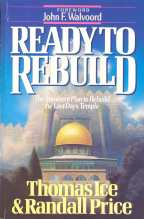 Jews for Jesus also endorse and sell 'Ready to
Rebuild: The Imminent Plan to Rebuild the Last Days Temple', by Thomas Ice and
Randall Price. These dispensational writers advocate the rebuilding of the
Jewish temple next to, if not in place of, the Dome of the Rock.32 The book review, quoting John Walvoord,
chancellor of Dallas Theological Seminary, also implies the State of Israel
supports moves to rebuild the Temple.
Jews for Jesus also endorse and sell 'Ready to
Rebuild: The Imminent Plan to Rebuild the Last Days Temple', by Thomas Ice and
Randall Price. These dispensational writers advocate the rebuilding of the
Jewish temple next to, if not in place of, the Dome of the Rock.32 The book review, quoting John Walvoord,
chancellor of Dallas Theological Seminary, also implies the State of Israel
supports moves to rebuild the Temple.
Something is happening in Israel! For many years there
has been speculation as to whether the Second Temple, destroyed in 70 AD, will
ever be rebuilt - even though Scripture predicts it. Now you can read the
startling evidence. The move is already underway. This fascinating,
fast-moving overview of contemporary events shows why the Temple is
significant in Bible prophecy and how, more than ever, Israel is ready to
rebuild. "A masterpiece presenting all the various views with substantiating
evidence... A mine of information for those concerned about prophecy... A
solid basis for faith and what can actually be expected in regard to the
rebuilding of the Temple... (it) is highly recommended." - John F. Walvoord33
2. The Temple of
Dispensationalism
The Historical Origins of the Christian Zionist
Temple Movement
2.1 The Premillennial
Presuppositions of a Rebuilt Temple
Of the three
eschatological positions, amillennial, postmillennial and premillennial, it is
the latter, with its belief in a literal and physical thousand year Messianic
reign on earth, centred on Jerusalem, which has sustained belief in a future
Jewish Temple. While this view was held prior to 194834, it was the founding of the State of
Israel, and more especially, the Israeli capture of the Old City of Jerusalem in
1967, which became the catalyst for speculation on the imminent rebuilding of
the Temple.35 In the early 19th Century the dominant
eschatological position among evangelicals was postmillennial, believing the
Church would triumph over evil, progressively converting the world before the
return of Jesus. Gradually the influence of Edward Irving's apocalyptism36 and J. N. Darby's pessimistic
dispensationalism37, brought about a revival in
premillennial thinking to the point when by the mid 20th Century it had come to
dominate evangelical and fundamentalist circles, virtually synonymous with
dispensationalism.38
2.2 A Futurist
Literal Hermeneutic
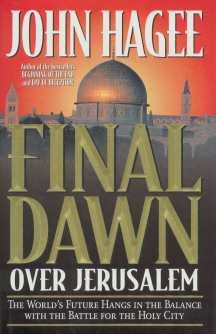 Speculation about the rebuilding of the Temple is largely
the consequence of a futurist literal hermeneutic popularised in the early 19th
Century by Edward Irving39 and the Albury Circle meeting in
Surrey,40 later by John Nelson Darby and the
Powerscourt Conferences in Ireland41 and then most effectively by Cyrus
Scofield in the United States through his Scofield Reference Bible.42 It is based on the premise that
prophecies made in the Old Testament which have not yet been fulfilled
literally, word for word, must await future fulfilment. Similarly the futurizing
of passages such as the Olivet Discourse in Matthew 24 require a rebuilt Temple
for their fulfilment.43 So, Scofield insisted,
Speculation about the rebuilding of the Temple is largely
the consequence of a futurist literal hermeneutic popularised in the early 19th
Century by Edward Irving39 and the Albury Circle meeting in
Surrey,40 later by John Nelson Darby and the
Powerscourt Conferences in Ireland41 and then most effectively by Cyrus
Scofield in the United States through his Scofield Reference Bible.42 It is based on the premise that
prophecies made in the Old Testament which have not yet been fulfilled
literally, word for word, must await future fulfilment. Similarly the futurizing
of passages such as the Olivet Discourse in Matthew 24 require a rebuilt Temple
for their fulfilment.43 So, Scofield insisted,
Not one instance exists of a 'spiritual' or
figurative fulfilment of prophecy... Jerusalem is always Jerusalem, Israel is
always Israel, Zion is always Zion... Prophecies may never be spiritualised, but
are always literal.44
One of Scofield's disciples, Lewis Sperry Chafer, who
founded Dallas Theological Seminary in 1924, became his most articulate and
influential exponent producing the first and definitive eight volume systematic
theology of Dispensationalism based on Scofield's scheme.45 Chafer defines the literal hermeneutic
upon which dispensationalism and the Christian Zionist belief in a rebuilt
Temple is based.
The outstanding characteristic of the dispensationalist
is... That he believes every statement of the Bible and gives to it the plain,
natural meaning its words imply.46
John Walvoord, Chancellor of Dallas Theological Seminary,
summarises the position of premillennial dispensationalists who take the authors
of the Bible "to mean what they say".
Orthodox Jews for many
years have been praying daily for the rebuilding of the temple. In this
expectation, they have had the support of premillennarians who interpret
Scriptural prophecies as meaning what they say when they refer to a future
temple in Jerusalem. The world as a whole, as well as the majority of the
church, have tended to ignore this expectation as being too literal an
interpretation of prophecy.47
Walvoord claims history has proved the premillennialist
correct.
The
fact that Israel is now in their ancient land organized as a nation, and the
impressive recent events which have put the city of Jerusalem itself into the
hands of Israel, have to a large extent revealed the premises and conclusions
of both the amillennarians and postmillennarians to be in error.48
Walvoord's dogmatic presuppositions are readily
questioned by those who hold differing eschatological views.49
2.3
The Dispensational Distinction between the Church and Israel
The literalist hermeneutic of
dispensationalism leads them to distinguish between God's continuing purposes
for the Jewish people from those of the Church.50 The idea that the Jews are God's
earthly people and the Church God's heavenly people was first argued by John
Nelson Darby.51 Charles Ryrie insists the sine
qua non of Dispensationalism to be:
1. A dispensationalist keeps Israel and the Church
distinct...
2. This distinction between
Israel and the church is born out of a system of hermeneutics that is usually
called literal interpretation...52
Scofield taught as a consequence that it was God's
intention to restore the nation of Israel to Palestine, to rebuild the Temple,
and re-institute the priesthood and sacrificial system.
According to the prophets, Israel, regathered from
all nations, restored to her own land, and converted, is yet to have her
greatest earthly exaltation and glory.53
Scofield even claimed that there will be a fourth
millennium temple in Jerusalem.
In a sense all the temples (i.e. Solomon's; Ezra's;
Herod's; that which will be used by the unbelieving Jews under the covenant with
the Beast [Dan. 9.27; Mt. 24. 15; 2 Thes. 2. 3,4]; and Ezekiel's future kingdom
temple [Ezk. 40-47.]), are treated as one 'house'-the 'house of the Lord,' 54
The conviction held by Christian Zionists that the
Jewish Temple must be rebuilt is therefore based upon a premillennial
eschatology, a futurist literal hermeneutic and the dispensationalist
distinction between Israel and the Church. These foundational presuppositions
stand or fall together.55
3.
The Temple of Prophecy
The Biblical Basis for the Rebuilding of the Jewish
Temple
The conviction that the Temple must
be rebuilt is based on the assumption that certain Old Testament prophecies
referring to the Temple have not yet been fulfilled and upon a few New Testament
references which, when read using a futurist literal hermeneutic, imply the
existence of a Jewish Temple immediately prior to the return of Christ.
3.1
Unfulfilled Old Testament Prophecies
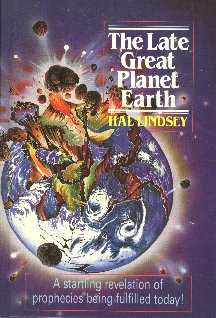 One of the most frequently quoted Old Testament passages by
Christian Zionists is Daniel 9:24-27. The sanctuary appears to have already been
destroyed in verse 26 yet sacrifices are brought to an end in verse 27 and then
the 'abomination that causes desolation' desecrates the Temple. On the basis of
a literal chronology in which it is necessary to place a gap of nearly 2000
years between the verses, Lindsey confidently argues,
One of the most frequently quoted Old Testament passages by
Christian Zionists is Daniel 9:24-27. The sanctuary appears to have already been
destroyed in verse 26 yet sacrifices are brought to an end in verse 27 and then
the 'abomination that causes desolation' desecrates the Temple. On the basis of
a literal chronology in which it is necessary to place a gap of nearly 2000
years between the verses, Lindsey confidently argues,
This prophecy speaks of sacrifice and offerings
which demand that the Jews rebuild the Temple for the third time upon its
original site. At that point, Judaism and Islam will be placed on an
inevitable course of war over the site, a war that will start Armageddon...
any move toward that direction is a crucial clue to what hour it is on God's
prophetic timetable.56
David Brickner, International Director of Jews for
Jesus, reaches the same conclusion.
Obviously the Temple has been rebuilt
because Daniel tells us this ruler puts an end to sacrifice and sets up some
kind of abomination (a loathsome horror that would be anathema to Jewish
worship) right inside the Temple in Jerusalem. Ultimately this ruler is
destroyed in a final conflagration of enormous proportion.57
Kenneth Barker posits five rather questionable reasons for the gap
between the 69th and 70th week. His two strongest arguments are based on
literalist dispensational presuppositions which evaporate if they are
themselves questioned.
The seventieth seven could not have been
fulfilled because the results of the Messiah's work outlined in v. 24 have
not yet been realized... All the remaining unfulfilled prophecies become
unintelligible unless the present church age is regarded as a distinct
period of time of unknown duration in God's prophetic program.58
There is nothing, however, in the text of Daniel 9 that requires a
futurist scenario, suggests a gap between the 69th and 70th weeks, or predicts
the rebuilding of a Jewish Temple. Gary DeMar points out,
The idea of separation and the placement
of an indeterminable gap between the two sets of weeks is one of the most
unnatural and nonliteral interpretations of Scripture found in any
eschatological system.59
Other commentators regard attempts to date Daniel's 'weeks' are
essentially flawed because they fail to read this prophecy as symbolic
'chronography' rather than literal chronology. So, for example, Goldingay
claims Daniel is using,
...a stylized scheme of history used to
interpret historical data rather than arising from them, comparable to
cosmology, arithmology, and genealogy...'60
Others also see these verses as having
been fulfilled theologically in Jesus who by his death put an end to
sacrifices as well as the Temple.61
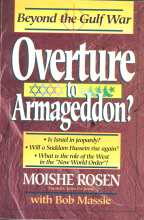 Moishe Rosen, however, following a futurist literal
reading, claims Ezekiel 43 also refers to contemporary events leading to the
imminent rebuilding of the Temple.
Moishe Rosen, however, following a futurist literal
reading, claims Ezekiel 43 also refers to contemporary events leading to the
imminent rebuilding of the Temple.
...at some point in these stressful
days, the ancient Jewish Temple will be rebuilt on the holy Temple Mount in
Jerusalem... Prophecy foretells the rebuilding of the Jewish Temple and the
reinstitution of the sacrifices prescribed in the law of Moses. In a vision
of the future Temple, Ezekiel received this word... Some way, somehow, the
Temple will be rebuilt, in spite of the fact that two Arab shrines now stand
on the only site on earth where this Temple may stand.6
Such a conviction is based on the imposition of dispensational
presuppositions and a futurist hermeneutic rather than by exegeting what the
text actually says. The same futurist assumptions are used to interpret
references to the destruction of the Temple found in the New Testament.
3.2 The New Testament
Fulfilment
The most important New Testament passage used to support the
belief in the rebuilding of the Jewish Temple is Matthew 24:1-2 and 15. While
Dispensationalists agree that in the first two verses Jesus is warning of the
imminent destruction of Jerusalem,63
they claim that by verse 15 Jesus is describing the desecration of
another future Temple which has yet to be built. This futurist interpretation
of Matthew 24, like that of Daniel 9:24-27 requires a gap of some 2000 years
between these verses. So, for example, John Walvoord argues,
This prediction obviously could not refer to A.D. 70 as it is an
event immediately preceding the second advent of Christ described, in
Matthew 24:2731. The prediction, however, gives us the clue concerning the
future Temple. The abomination of desolation has reference to a future event
paralleling to some extent "the abomination that maketh desolate" of Daniel
11:31 fulfilled in the desolation of the Temple in the second century B.C.
by Antiochus Epiphanes which sparked the Maccabean revolt.
64
Hal Lindsey takes a similar but rather more
dogmatic view.
Of course, for Temple rites to be
stopped in the last days, we know they must be restarted. The words of Jesus
Himself in Matthew 24:15 require that a new holy place be built and a
complete sacrificial system re-instituted. And since only a consecrated
temple can be defiled, this prophecy shows that the physical Temple must not
only be rebuilt, but a functioning priesthood must begin practising once
again.65
Lindsey is not averse to adding words to the text of
scripture where they help to reinforce his interpretation.
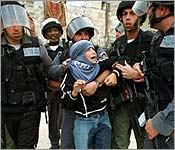 Therefore when you see the Abomination which was spoken of
through Daniel the prophet, standing in the holy place [of the rebuilt
temple] (let the reader understand), then let those who are in Judea flee to
the mountains...66
Therefore when you see the Abomination which was spoken of
through Daniel the prophet, standing in the holy place [of the rebuilt
temple] (let the reader understand), then let those who are in Judea flee to
the mountains...66
While Lindsey and Walvoord believe Jesus
was predicting a future desecration of a rebuilt temple, non-dispensationalist
commentators suggest his words were fulfilled in the events leading up to the
destruction of Jerusalem in 70 A.D. when Jewish Zealots desecrated the temple
using it as a fortress against the Romans.67
Eusebius, the 4th Century church
historian, for example, refers to the eyewitness accounts of Josephus to show
how these predictions were understood as having already been fulfilled by
then.68
...what terrible, and worse than
terrible, sights were seen by those who had fled to Jerusalem itself as to a
most sure metropolis; the character of the whole war, and each of its
happenings in detail; how at the end the abomination of desolation announced
by the prophets took its stand in the once far-famed temple of God when it
endured its utter ruin and final destruction by fire [all these things] he
who wishes may gather with exactitude from the history written by
Josephus.69
Writing in the Jewish Wars, Josephus links Daniel's prophecy to
the desecration of the Temple and destruction of Jerusalem in AD 66-70.
And indeed it so came to pass, that our
nation suffered these things under Antiochus Epiphanes, according to
Daniel's vision. And what he wrote many years before they came to pass. In
the very same manner Daniel also wrote concerning the Roman government, and
that our country should be made desolate by them.70
Josephus also specifically associates the
desecration of the Temple with the activities of Jewish Zealots who, between
November 67 and the Spring of 68 AD., used the Temple as a military fortress,
murdered Jewish opponents within it and even entered the Holiest of Holies.
They also appointed their own high priests who were 'undeserving, ignoble and
vile persons' including an 'ignoramus' called Phannias.71
For there was a certain ancient oracle
of those men, that the city should then be taken and the sanctuary burned,
by right of war, when a rebellion should invade the Jews, and their own hand
should pollute the temple of God. Now while these zealots did not [quite]
disbelieve these predictions, they made themselves the instruments of their
own accomplishments.72
These men made the Temple of God a
stronghold for them, and a place where they might resort, in order to avoid
the troubles they feared from the people; the sanctuary was now become a
refuge, and a shop of tyranny.73
Two of the boldest of them fell upon
Zacharias in the middle of the temple and killed him; and as he fell down
dead, they bantered him... They also threw him down from the temple
immediately into the valley beneath it.74
The best esteemed also of the high
priests... Ananus stood in the midst of them, and casting his eyes
frequently at the temple, and having a flood of tears in his eyes, he said,
"Certainly it had been good for me to die before I had seen the house of God
full of so many abominations, or these sacred places, that ought not to be
trodden upon at random, filled with the feet of these blood-shedding
villains"; ...called Jews, do walk about in the midst of the holy places, at
the very time when their hands are still warm with the slaughter of their
own countrymen.75
Believing God would intervene and deliver them by force, the
Zealots invited the Idumean army of some 20,000 troops to come and help defend
Jerusalem from the Romans. Josephus tells us that instead, the Idumeans took
advantage of the city and plundered it, filling the Temple with the blood of
those slaughtered including the family of the High Priest Ananus.
...nor did the Idumeans spare anybody...
And now the outer temple was all of it overflowed with blood; and that day,
as it came on, they saw eight thousand five hundred dead bodies there.76
Josephus regarded the death of Ananus as
the beginning of the destruction of Jerusalem.77
It is probable therefore that Jewish
Christians also recognised in the murder of Ananus and the appointment of
apostate high priests like Phannias, the sacrilege Jesus had warned of in
Matthew 24, and so fled Jerusalem for the mountains of Pella on the other side
of the Jordan.78
The Temple was subsequently defiled yet again by the invading
Roman army. The Roman soldiers worshipped the eagle on their ensigns and
placed them in the Temple where they offered sacrifices to their pagan gods.
Josephus describes the scene.
And now the Romans, upon the flight of
the rebellious into the city, and upon the burning of the holy house itself,
and of all the buildings around it, brought their ensigns to the temple and
set them near to its eastern gate; and there did they offer sacrifices to
them, and there they did make Titus imperator with the greatest acclamations
of joy.79
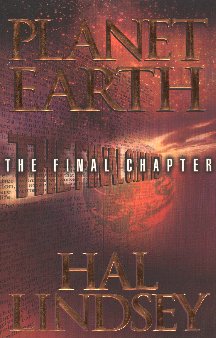
As a 1st Century eyewitness and historian,
Josephus shows how the Temple was desecrated on numerous occasions first by
Jewish Zealots, then by the marauding Idumeans and finally by Titus and his
Roman army. The irony is that Josephus also records that Titus lamented how
the Jews themselves destroyed their own temple by setting it on fire.80
When I came near to your temple, I again
departed from the laws of war, and exhorted you to spare your own sanctuary,
and to preserve your holy house to yourselves. I allowed you a quiet exit
out of it, and security for your preservation... Yet have you still despised
every one of my proposals, and have set fire to your holy house with your
own hands.81
While the Idumeuns and Romans did
subsequently desecrate the Temple, it was first and foremost the Jews who,
having rejected Jesus and declared Caesar to be their only king, appointed
apostate high priests and used the Temple as a fortress against Rome, who
ultimately fulfilled the words of Jesus and made Temple worship idolatrous.82
John Calvin reached this conclusion believing God,
...deserted his Temple, because it was
only founded for a time, and was but a shadow, until the Jews so completely
violated the whole covenant that no sanctity remained in either the Temple,
the nation, or the land itself.83
Whether at the hands of Jews or pagans,
with the destruction of Jerusalem in AD 70 the abomination had indeed brought
desolation. Dispensationalists, however, reject the contemporary historical
evidence, substantiating a 1st Century fulfilment, preferring instead to
interpret Matthew 24 as prophecy awaiting future fulfilment. So when Jesus
promised these events would be witnessed by 'this generation'84
Lindsey understands the word 'this' to
refer to his own generation who had witnessed the founding of the State of
Israel in 1948 and capture of the Old City of Jerusalem in 1967.85
So the rebuilding of the Temple is
significant not only because of the potential firestorm it will create
between Jews and Muslims in the Middle East. It is also a critical
development in the entire prophetic scenario. The Bible makes it clear that
in the last days the Antichrist will establish his reign in the Temple of
Jerusalem. Therefore, the Temple must and will be rebuilt.86
A plain reading of the text, however, indicates that Jesus spoke
with urgency intending his hearers to recognise the signs of the times and
escape the imminent death and destruction about to befall Jerusalem. Walvoord,
nevertheless, claims that his reading of 2 Thessalonians 2:1-4 confirms a
futurist dispensational reading.
In this passage prediction is made that the future man of sin
"who opposeth and exalteth himself above all that is called God, or that is
worshipped" assumes the role of deity, "so that he as God sitteth in the
temple of God, showing himself that he is God" (2 Thess 2:4). Using this
passage as an interpretation of the prediction of Daniel 9:27 and Matthew
24:15, it may be concluded that following the desecration of the Jewish
temple and its sacrifices the future man of sin identified by many as "the
prince that shall come" (Dan 9:26) will become
an object of worship.87
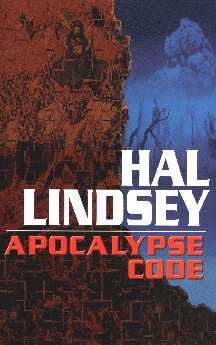
Further evidence for the rebuilding of the Temple is allegedly
found in the instructions given to the Apostle John to measure the Temple in
Revelation 11:1-2.
The Apostle John wrote the Book of
Revelation about the year A.D. 95. This means that the Temple... was
non-existent for the twenty-five years preceding John's writing... What
Temple, then, was John referring to? There can be only one answer - a
yet-to-be-built structure!88
It is on the basis of these passages and a literalist logic that
dispensationalists believe the Bible promises a future Temple will be built in
order to be desecrated and destroyed once again.
With the Jewish nation reborn in the
land of Palestine, ancient Jerusalem once again under total Jewish control
for the first time in 2600 years, and talk of rebuilding the great Temple,
the most important sign of Jesus Christ's soon coming is before us... It is
like the key piece of a jigsaw puzzle being found... For all those who trust
in Jesus Christ, it is a time of electrifying excitement.89
A study of the usage of the word Temple
in the New Testament reveals 112 references. Of 66 verses where the word
occurs in the Gospels, 58 refer to Herod's Temple. In the other eight Jesus
compares himself to the Temple, its destruction and his own resurrection.90
The word is also used 25 times in
Acts and always of Herod's Temple or a pagan shrine. In the Epistles the word
occurs in nine verses. In three it refers to the existing Jewish Temple and once
to a pagan shrine.91
In the Book of Revelation the word occurs
a further 12 times and in each case refers specifically to the heavenly Temple
or to the Lord God Himself92
. On the six remaining occasions when the
word is used in the Epistles it describes the individual Christian and
corporately the Church as the Body of Christ.93
Jesus anticipated this in his conversation
with the Samaritan women in John 4. Worship, Jesus predicted, would soon no
longer be confined to the Temple in Jerusalem but become universal 'in spirit
and truth'.94
While Jesus warned of the destruction of
the Temple, and was known to have said so by his critics, he never promised
that it would ever be rebuilt.95
In Hebrews, the author describes
the offering of sacrifices between the death of Christ and the destruction of
the Temple as an 'illustration' of, and 'copies' of, heavenly realities, a
'reminder of sins' but unable, unlike the finished work of Christ, to take sin
away.96
Peter uses the same terminology to
describe the way Christians are being made into the new house of God,97
in which Jesus is the 'precious
cornerstone'.98
There is therefore not a
single verse in the New Testament which promises the Jewish Temple would be
rebuilt or that a 2000 year 'parenthesis' should be placed between references
to its desecration and destruction. Christian Zionists consistently ignore the
way in which the Temple is invested with new meaning in the New Testament as a
'type' for Jesus Christ and his Church99
Instead they advocate a return to the very practices made
redundant by the work of Jesus Christ.
4. The Temple of Sacrifice
The Theological
Purpose for the Rebuilding of the Jewish Temple
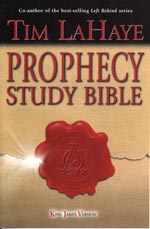 The rebuilding of the Temple is meaningless
without at the same time the reintroduction of the Mosaic sacrificial system.
Based on his reading of Daniel, Walvoord, for example, claims,
The rebuilding of the Temple is meaningless
without at the same time the reintroduction of the Mosaic sacrificial system.
Based on his reading of Daniel, Walvoord, for example, claims,
Judging by Scriptures, this is
precisely what they will do as it would be impossible to cause sacrifices to
cease if they were not already in operation. The usual method of dismissing
this as something which occurred in A.D. 70 does not provide a reasonable
explanation of the text nor account for the fact that the second coming of
Christ occurs immediately thereafter.100
Scofield in his Reference Bible claimed, however,
that the sacrifices mentioned in Ezekiel 43:19, would only be a 'memorial'
offering.
Doubtless these offerings will be
memorial, looking back to the cross, as the offerings under the old covenant
were anticipatory, looking forward to the cross. In neither case have animal
sacrifices power to put away sin (Heb. 10.4; Rom. 3.25).101
For one so committed to 'literalism' such an interpretation is
unconvincing for the verse explicitly refers to the sacrifice of a 'young
bullock as a sin offering.' If Scofield appears to fudge the issue, the note
on the same verse in the New Scofield Reference Bible goes even further,
undermining the entire hermeneutical premise of Dispensationalism.
The reference to sacrifices is not to be
taken literally, in view of the putting away of such offerings, but is
rather to be regarded as a presentation of the worship of redeemed Israel,
in her own land and in the millennial Temple, using the terms with which the
Jews were familiar in Ezekiel's day.102
If this particular reference to sacrifice
need not be taken literally then the whole dispensationalist edifice
collapses, flawed by its internal inconsistency.103
It is impossible to confuse or equate the
sacrifice of a young bullock with a memorial offering which consisted of grain
and oil.104
The immediate context for Ezekiel's vision
of a rebuilt Temple is the promised return of the Jews from Babylonian exile,
not some long distant eschatological event. This would have been utterly
meaningless to the exiles longing to return to Israel. Furthermore, if Ezekiel
was referring to some future millennial age, Jesus Christ could not serve in
such a Temple because he was not of the tribe of Levi.105
However, even if he could do so it would
still be incongruous for Jesus to offer animal sacrifices when he had replaced
them by the shedding his own blood.106
Such an interpretation undermines the New
Testament emphasis on the finished and sufficient work of Christ.107
Nevertheless, Zahava Glaser, of Jews for Jesus, describes how over
the past 1900 years the liturgy used in the synagogue has kept the memory of
the Temple alive in Jewish hearts and prayers. He therefore insists, 'when God instituted the sacrificial system, it was instituted
for all time.'
What flour is to bread, the
sacrificial system is to the religion revealed in the Jewish Scriptures. It
is not a garnish. It is not a flavoring. It is the very substance out of
which the Jewish religion was constructed. We can forever design our own
substitutes, but they cannot satisfy our yearnings the way God's own
provision can. Though some rabbis might minimize the revealed system of
worship and its requirements, can the individual Jew neglect what God says?
Can there be a "proper" Judaism without a priesthood, an altar, a sacrifice
and a place on earth where God meets the individual?108
Glaser seems to be representative of those who hold
that the Temple will be rebuilt because the Jews have a separate covenant
relationship with God, apart from the Church. He therefore does not appear to
see the high priesthood of Jesus as in any sense necessarily replacing or
superseding the Jewish religious system.
By insisting on such an arbitrary and
dualistic separation between God's purposes for the Jews and those of the
Church, Christian Zionists are promoting Old Testament 'shadows' alongside
their New Testament 'substance'.109
In doing so they are seeking to revive
what is now obsolete. Turning the clock back in redemptive history110 they are Judaizing the Christian faith.111
If religious Jews do indeed rebuild their
Temple and re-institute sacrifices it will only confirm their rejection of the
atoning work of Jesus Christ. For Christians to support them in the belief
that future sacrifices may atone for sin is apostasy.112
This is because the movement in the
progressive revelation of Scripture is always from the lesser to the greater.
It is never reversed. The New Testament repeatedly sees such Old Testament
concepts as the Temple, High Priest and sacrifice as 'types' pointing to and
fulfilled in Jesus Christ.113
Typology in Scripture never typifies
itself, nor is it ever greater than that which it typifies.114
Christians who therefore advocate the rebuilding of the Temple are
regressing into a pre-Christian sacrificial system, superseded and annulled by
the finished work of Jesus Christ. DeMar writes,
With the true lamb slain, the earthly
temple could no longer operate as a place of sacrifice. The action of the
high priest, "standing in the holy place" (24:15), continuing to offer
sacrifices in the temple, was an abomination, a rejection of the work of
Christ.115
The Temple was but a temporary edifice, 'a
copy and a shadow of what is in heaven,'116
anticipating the day when God would dwell
with people of all nations throughout the world because of the atoning work of
the true Temple, Jesus Christ.117
J.C. Ryle, writing in 1856, challenged those of his day who
anticipated the rebuilding of the Temple based on Matthew 24 in like manner.
It surprises some to find so much
importance attached to the taking of Jerusalem: they would rather regard the
whole chapter as unfulfilled. Such persons forget that Jerusalem and the
temple were the heart of the old Jewish dispensation: when they were
destroyed, the old Mosaic system came to an end. The daily sacrifice, the
yearly feasts, the altar, the holiest of holies, the priesthood, were all
essential parts of revealed religion, till Christ came, - but no longer.
When he died upon the cross, their work was done: they were dead, and it
only remained that they should be buried. But it was not fitting that this
thing should be done quietly. The ending of a dispensation given with so
much solemnity at mount Sinai, might well be expected to be marked with
peculiar solemnity; the destruction of the holy temple, where so many old
saints had seen "shadows of good things to come," might well be expected to
form a subject of prophecy: and so it was. The Lord Jesus specially predicts
the desolation of "the holy place." The great High Priest describes the end
of the dispensation which had been a schoolmaster to bring men to Himself.118
Charles Spurgeon put it rather more succinctly.
Judaism had become a "carcase", dead and
corrupt; fair prey for the vultures or carrion-kites of Rome.119
Nevertheless, the weight of
argument in favour of a historical or preterist interpretation has not
hindered Christian Zionists from supporting and funding the work to rebuild
the Jewish Temple.
5. The Temple of Destiny
The Practical Issues of Rebuilding
the Jewish Temple
5.1 When - the timing for the
rebuilding
Brickner asserts that
the preparations for rebuilding the Temple began in 1967 with the capture of
the Old City of Jerusalem.120
Lindsey is equally
confident. 'Right now, as you read this, preparations are
being made to rebuild the Third Temple.'121
5.2 Where - the location
of the First and Second Temples
One of the unresolved difficulties faced by those
who favour the rebuilding of the Jewish Temple is deciding where to put it. It
is critical that any future Temple be built on the same site as the Temples of
Solomon, Zerubbabel and Herod. There appears to have been some continuity with each being built with its Holy of Holies enclosing the
same protrusion of Mount Moriah, also known as Even ha-Shetiyah (The
Foundation Stone). There are three main theories advocated by historians and
archaeologists.

One theory C suggested by Father Bellarmino Bagatti, a
Franciscan scholar and supported by Tel Aviv architect Tuvia Sagiv, is based
on early archaeological findings, Josephus and topographical elevations. They
argue that the Temple was situated at the southwest corner of the platform
near to where the Al Aqsa mosque is today.122
Based on infrared
thermographic scans of the Temple Mount they claim that underground structures
may prove the presence of vaults and Hadrian's temple to Jupiter in this area to
the south of the Dome of the Rock. If the Roman's built their pagan temple over
the destroyed Jewish Temple, as was often their custom, this may indicate that
the Temple was originally at this location.
A more popular theory A is offered by Asher Kaufmann, a physicist at the
Hebrew University.123
His research relies on details given in
the Mishna Tractate known as Middot (Measurements) and computations based on
the angles of line-of-sight between the Mount of Olives where the red heifer
was allegedly sacrificed and the eastern court of the Temple where the Great
Altar stood. Kaufman claims that based on these calculations the Temple was
built on the north-western corner of the Temple platform about 330 feet away
from the Dome of the Rock. He believes that a small cupola at this site, known
in Arabic as the Dome of the Tablets, was the Foundation Stone within the Holy
of Holies.124
The most commonly held theory B, with both traditional support and the consensus
among Israeli archaeologists today, is that the Temple stood on the site of
the Dome of the Rock. Research by Benjamin Mazar, Leen Ritmeyer, who served as
chief architect for the Western wall excavations, as well as Dan Bahat,
professor of archaeology at Bar Ilan University, conclude that based on
physical evidence remaining on the site, both the First and Second Temples
were situated under the Dome of the Rock.125
Ritmeyer claims to have found within the
Muslim Dome of the Rock, the foundation trenches and the walls of the Holy of
Holies, and place where the Ark of the Covenant rested.126
Kaufmann's northern site theory is increasingly favoured by
Christian Zionists as it does not require the destruction of the Dome of the
Rock.
It is fascinating observing how people like Lindsey have altered
their views over time. In the 1970's, for example, Lindsey insisted the Jewish
Temple would have to be built in place of the Dome of the Rock.
There remains but one more event to
completely set the stage for Israel's part in the last great act of her
historical drama. This is to rebuild the ancient Temple of worship upon its
old site... There is one major problem barring the construction of a third
Temple. That obstacle is the second holiest place of the Muslim faith, the
Dome of the Rock. This is believed to be built squarely in the middle of the
old temple site. Obstacle or no obstacle, it is certain that the Temple will
be rebuilt. Prophecy demands it.127
Lindsey even appeared to know the exact location of the former
structure.
Archaeologists have uncovered a
pillar from Solomon's porch as the first major find from the Herodian
Temple. From its location in relation to the Wailing Wall they have now
ascertained where the ancient Holy of Holies in the Temple was located.
Imagine my emotions as I stood under a sign at the Wall which read in
Hebrew: 'Holy of Holies, 10 Metres,' with an arrow pointing towards a spot
thirty feet behind the existing Wall in the direction of the Dome of the
Rock!128
By 1983 Lindsey had changed his mind. Favouring Kaufman's position
Lindsey now claimed,
I also believe that this discovery has
accelerated the countdown to the events that will bring the Messiah Jesus
back to earth. The reason for this belief is that the predicted Third Temple
can now be built without disturbing the Dome of the Rock. ...the Temple and
its immediate guard wall could be rebuilt and still be twenty-six meters
away from the Dome of the Rock. 129
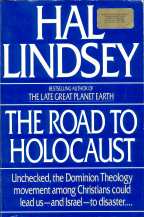 Having
discovered the true site of the Herodian Temple, Lindsey proceeded to find
scriptural verification for this new location.
Having
discovered the true site of the Herodian Temple, Lindsey proceeded to find
scriptural verification for this new location.
Revelation chapter 11 indicates
this very situation: 'I was given a reed like a measuring rod and told, 'Go
and measure the temple of God and the altar, and count the worshippers
there. But exclude the outer court; do not measure it, because it has been
given to the Gentiles. They will trample on the holy city for 42 months.''
(Revelation 11:1,2 NIV). The outer court, which includes the area where the
Dome of the Rock is situated, was given to the Gentiles. So this prophecy
accurately reflects the situation that is present today... All of these
things are tremendously exciting to those who know Bible prophecy. We are
literally in the very last days of the Church Age. The Temple will be
rebuilt soon!130
In 1994, Lindsey heightened speculation still
further by insisting,
I remember my whole body tingling
with excitement when I measured the distances on the Temple platform and
realized that God had left out the outer court because it allowed for the
Gentile temple to remain alongside the rebuilt Jewish Temple during the
Tribulation. Folks, the footsteps of our Lord and Savior, Jesus Christ, can
already be heard as He approaches the doors of heaven to return. The Temple
is the last sign that needs to fall into place before events irreversibly
speed toward the return of Jesus.131
Brickner also supports the claims made by Randall
Price that the Jewish Temple could actually be rebuilt alongside the Dome of
the Rock.
...there may be a solution for that
barrier to rebuilding. You see, recently some archaeologists have concluded
that the actual location of the foundation stone upon which the ark rested
is north of the Dome of the Rock. If true, it is theoretically possible to
rebuild the Temple without having to tear down the Muslim holy sites.
Nevertheless, because of the proximity to the mosques, it remains a
sensitive issue to say the least.132
Most orthodox Jews, however, remain
convinced that the Dome of the Rock must be removed before the Temple can be
rebuilt,133
although Gershon Salomon claims the
Dome of the Rock was built by Caliph Abd el-Malik in 691 AD as a Jewish house
of prayer, as he was allegedly a Jewish proselyte.134
5.3 How - the Means for Rebuilding
Chaim Richman, a spokesman for the Temple
Institute, claims detailed blueprints for the Third Temple have existed for
several years. Other buildings associated with the a future Temple are planned
or have already been built. Rabbi Shlomo Goren, for example, has supervised
the construction of a replica of the 70-seat Supreme Court building for the
new Sanhedrin, adjacent to the Temple Mount in the Jewish Quarter. The legal
stipulations which the Sanhedrin will use to supervise Temple practices are
also being published. The first volume was printed in 1986 by the Research
Center for Jewish Thought under the direction of Yoel Lerner.135
A member of Meir Kahane Kach movement,
Lerner was arrested and convicted in 1982 for attempting to sabotage the Dome
of the Rock for which he was sentenced to two and a half years in prison.136
Previously he had served a three year sentence for plotting to
overthrow the Israeli government and establish a state based upon religious
law.
5.3.1 Training the Priests - The Temple Mount
Yeshivas
According to
rabbinic tradition, although the genealogical records of the Temple were lost
in 70 AD when the Jews were dispersed, Levites were forbidden to change their
family names when other Jews assimilated into the Roman Empire. The use of
modern DNA tests has also been used to confirm the authenticity of men
suitable to train as Temple priests. Rabbi Nachman Kahane, head of the Young
Israel Synagogue together with the Institute for Talmudic Commentaries
maintains a computer database of all known priestly candidates in Israel.
Other Orthodox organizations in Israel are helping to educate them. The
Yeshiva founded by Motti Dan Hacohen, known as Ateret Cohanim, for example, is
preparing students to perform priestly service. Its sister organization Atara
Leyoshna, has aggressively acquired or illegally occupied many Arab properties
in the Muslim Quarter near the Temple Mount in order to establish and
consolidate a Jewish presence in preparation for rebuilding the
Temple.137
Brickner cites the following advert placed in Ha'aretz in March
1998.
Children wanted for future Temple
service. Ultra-orthodox Jewish sect is searching for parents willing to hand
over newborn sons to be raised in isolation and purity in preparation for
the rebuilding of the biblical temple in Jerusalem. Only members of the
Jewish priestly caste, the Kohanim need apply.138
Brickner appears representative of those Christian Zionists who
are convinced that ultra-orthodox groups will fulfill the vision of a fully
functioning Jewish Temple.

5.3.2 Consecrating the Priests - Breeding the Red
Heifers
The dilemma facing
prospective Temple priests is how to gain ritual purity in order to begin
serving in a future Temple. According to the Book of Numbers, the ashes of a
pure unblemished red heifer, itself previously offered by a ritually pure
priest, must be mixed with water and sprinkled on both them and the Temple
furniture. With the destruction of the Temple in 70 AD the ashes used in the
ceremony were lost and the Jews of the Diaspora have since therefore been
perpetually unclean. The search for the ashes of the last red heifer have so
far proved unsuccessful. In 1998, however, Clyde Lott, a Mississippi rancher,
formed Canaan Land Restoration of Israel, Inc. for the purpose of raising
livestock suitable for Temple sacrifice.139
Shortly after this Rev. Lott (who is also a cattleman by trade) came to
possess a red heifer that met all the biblical qualifications of Numbers chapter
19. Since that historic time in, November 11, 1994 God has miraculously unveiled
HIs divine plan for the restoration of Israel, to the Church. The Holy Ghost has
worked during this time to reveal to Apostolic ministers and laymen the need to
unify their efforts in order to see this project move forward, both in the
Spirit and in the natural. August 11, 1998 Israel is expecting to receive from
Canaan Land Restoration, 500 head of bred, registered Red Angus Heifers.140
According to Newsweek, in 1997, the first red heifer for 2000
years was born at the kibbutz Kfar Hassidim near Haifa.
Her name is Melody, and she whiles
away her oblivious to controversy that surrounds her. Some would like to
put a bullet in her head. Others want to burn her to cinders. But the
greatest troubles Melody knows are the flies that swarm about her pen.
Melody, a red heifer, born on an ordinary farm in northern Israel last
year. But to observant Jews, there is nothing ordinary about her. A couple
of millenniums ago, in the era of the first and second Jewish Kingdoms,
the ashes of a red heifer, butchered in her third year, were mixed with
water and used to purify Jews before they could approach the Holy Temple
on Jerusalem's Temple Mount.141
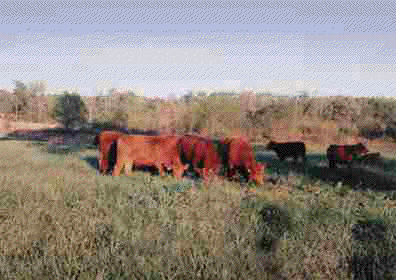
There was, however, some debate concerning Melody's purity due
to the appearance of several white hairs. Nevertheless, Randall Price
claims, other qualified red heifers have been secured from Clyde Lott. These
have already been approved by Israeli authorities for import and are now
awaiting transport to Israel.
Because the Jewish sage
Maimonides taught that there had been nine red heifers between the
beginning of the Tabernacle and the end of the Second Temple, and that
when the tenth arrived it would be prepared by the Messianic King, a
special urgency is attached to this recovery by leaders of the Temple
Institute, such as Rabbi Chaim Richman.142
The cost of the work of rebuilding the Temple, the training of
its future priests and furnishings is being funded, in large measure, by
Christian Zionists as well as Jewish supporters.
5.3.3 Funding the Work - The Temple Treasury
The International Christian Embassy as well
as mega-churches such as Chuck Smith's Calvary Chapel in Costa Mesa in
California have been associated with the funding of the Jerusalem Temple
Foundation (JTF) founded by a Jewish terrorist, Stanley Goldfoot and several
leading American evangelicals.143
Terry Reisenhoover is the chairman and
Goldfoot its international secretary. According to the Israeli newspaper
Davar, as a member of the Stern Gang and also Irgun, Goldfoot was
responsible for planting the bomb at the King David Hotel in Jerusalem on
22nd July 1946 which killed 100 British soldiers and officials.144
In 1948 he was also convicted and jailed by
an Israeli court for the murder of UN envoy Count Bernadotte.145
Goldfoot has subsequently been influential in
raising large sums of money, allegedly up to $100 million a year146, for the JTF through American Christian TV and Radio
stations and evangelical churches. Although van der Hoeven has denied direct
involvement in efforts to see the Jewish Temple rebuilt, he has admitted
that, "...when supporters volunteer to give money for building a temple, he
directs them to Goldfoot." Pat Robertson's Christian Broadcasting Network
has also assisted in fund raising for Gershon Salomon's Temple Mount
Faithful.147
6. The Temple of Armageddon
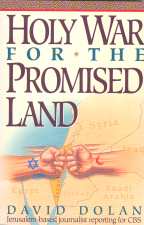 The Political Consequences of Rebuilding the Jewish
Temple
The Political Consequences of Rebuilding the Jewish
Temple
The religious
aspirations of Jewish and Christian Zionists working toward the rebuilding
of the Jewish Temple clearly have political ramifications which threaten to
destabilise the entire Middle East.148
However, apparently unaware of Muslim
sensitivities, Lindsey naively suggests that a Jewish Temple could be built
alongside the Muslim shrine and become 'the greatest tourist attraction in
the world'.149
But lets think even more practically.
Not only would the Temple become a unifying force for Israel's diverse and
pluralistic society, it would also, without doubt, become the greatest
tourist attraction in the world. Its basic economics. Imagine what a new
Temple would do for the Israeli economy, which relies so heavily on
tourism. The Temple would also serve to attract more Jews from all over
the world-and... The Bible tells us that eventually all of the dispersed
will return to their homeland. The Temple would serve as a kind of
spiritual magnet. This, too, would fit into the prophetic scenario, which
indicates that Israel is destined to play a major role in the world and
experience vast wealth, power and prestige in the last days.150
In his earlier writings Lindsey was rather less optimistic but
probably more accurate.
The dispute to trigger the war of
Armageddon will arise between the Arabs and Israelis over the Temple Mount
and Old Jerusalem (Zechariah 12:2-3), the most contested and strategic
piece of real estate in the world. Even now we are witnessing the
escalation of that conflict.151
6.1 Support for the Jewish State
 Christian Zionists tend to find their solidarity with the
religious right-wing of Israeli society. For example, the Israeli Prime
Minister has spoken at every one of the International Christian Zionist
Congresses held annually in Jerusalem since 1980. Brickner is typical in
lamenting the fact that ten days after Moshe Dyan captured the Old City in
1967, he returned the Temple Mount area to the Islamic authorities.
Christian Zionists tend to find their solidarity with the
religious right-wing of Israeli society. For example, the Israeli Prime
Minister has spoken at every one of the International Christian Zionist
Congresses held annually in Jerusalem since 1980. Brickner is typical in
lamenting the fact that ten days after Moshe Dyan captured the Old City in
1967, he returned the Temple Mount area to the Islamic authorities.
Israel's secular military leaders had
no commitment to rebuilding the Temple. To them it was a relic of the
past. To them, the Temple Mount represented potential conflict with Islam,
more a political liability than anything else. Many Jews today feel quite
different about that "little" piece of real estate.152
In an open letter to Benjamin Netanyahu, then Israel's
ambassador to the United Nations, the International Christian Embassy
affirmed its commitment that Jews be able to worship again on the Temple
Mount.
The International Christian Embassy
Jerusalem fervently hopes and prays that the day will soon come that the
Temple Mount-or as the Bible calls it, the Mountain of the Lord-will no
longer be a reason for religious divisiveness, but a place where all
mankind will unite in worship to God according to His declared purposes.
The Bible foresees the day when all nations will flow to the Mountain of
the Lord irrespective of race or colour, and says that: 'His house shall
be called a house of prayer for all nations."153
Van der Hoeven, former director of the ICEJ, quotes from the
speech made by Teddy Kollek, then mayor of Jerusalem, at the 1985 Christian
Zionist Feast of Tabernacles celebration. Behind him was a futuristic
painting of Jerusalem showing a rebuilt Jewish Temple.
Thank you for being here, for coming
here faithfully, every year. Your faith gives us strength... I am glad I
am speaking here against the background of this beautiful painting of
Jerusalem. It is not yet the Jerusalem of today. If you look properly, you
will see that the Temple, the Holy of Holies, has been restored!.. Our
return is the first sign that the city will be existing again as it is in
this painting!154
Christian Zionists are consistent in
supporting and defending Israel from criticism whether political or
religious equating anti-Zionism with anti-Semitism.155
6.2 Support for the Temple Mount Movement
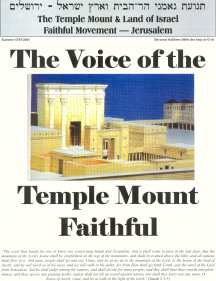 There is a clear and unambiguous symbiotic relationship
between Christian and Jewish Zionist organisations committed to rebuilding
the Jewish Temple. For example, Jews for Jesus provides information on, and
offers direct Internet links to, eight extreme and militant Jewish
organisations involved in attempts to destroy the Dome of the Rock, rebuild
the Jewish Temple and re-institute Jewish Temple worship and sacrifices.
These include the Temple Institute and Temple Mount Faithful.156
There is a clear and unambiguous symbiotic relationship
between Christian and Jewish Zionist organisations committed to rebuilding
the Jewish Temple. For example, Jews for Jesus provides information on, and
offers direct Internet links to, eight extreme and militant Jewish
organisations involved in attempts to destroy the Dome of the Rock, rebuild
the Jewish Temple and re-institute Jewish Temple worship and sacrifices.
These include the Temple Institute and Temple Mount Faithful.156
Now, however, despite the fact that
two Muslim mosques sit upon the Temple Mount, there are Jewish groups
concerned with training priests for the day that the Temple is restored.
Aterah Kohanim is one such group. They have purchased many of the Arab
homes in the Old City of Jerusalem, very near the Temple Mount. They have
also set up yeshivas to educate and train Temple priests; two hundred men
are in active training for the priesthood there now.157
Randall Price similarly provides
information on how to contact and show solidarity with 18 different Temple
organisations.158
One of the most extreme is the Temple Mount Faithful. Brickner
points out, approvingly, that they are ready to commence building 'at any
moment.'
They've cut a massive piece of
limestone, a 4.5-ton cornerstone to begin their work. Their first attempt
to bring it up to the Temple Mount was in 1989. Each year during Sukkot,
the Feast of Tabernacles, they enact the elaborate water-drawing ceremony
at the pool of Siloam, and then attempt to set the cornerstone for the
rebuilding of the Temple. Each year the Israeli government authorities
prevent them. The site remains a holy place for Muslims and it is under
Islamic control. Israeli government officials have little stomach for
actions that might well lead to riots or perhaps even World War III.159
Zhava Glaser, also of Jews for Jesus,
affirms the motives of Gershon Salomon, founder of The Temple Mount Faithful
who has over 9,000 supporters. He describes Salomon as a 'man of courage',
whose credentials as an Israeli patriot, soldier, politician and Zionist are
'impeccable'.160
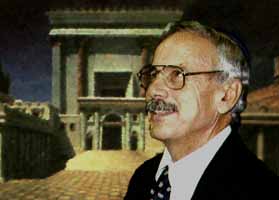 Salomon has, however, become increasingly provocative in his
assertions that the Dome of the Rock must be destroyed. Speaking at the
Jerusalem Christian Zionist Congress in 1998, Salomon insisted,
Salomon has, however, become increasingly provocative in his
assertions that the Dome of the Rock must be destroyed. Speaking at the
Jerusalem Christian Zionist Congress in 1998, Salomon insisted,
The mission of the present generation
is to liberate the Temple Mount and to remove - I repeat, to remove - the
defiling abomination there ... The Jewish people will not be stopped at
the gates leading to the Temple Mount ... We will fly our Israeli flag
over the Temple Mount, which will be minus its Dome of the Rock and its
mosques and will have only our Israeli flag and our Temple. This is what
our generation must accomplish.161
According to Sam Kiley, Salomon is the '...almost acceptable
face of millennial cults.' In a Times interview Salomon insisted that the
Islamic shrine must be destroyed.
The Israeli Government must do it. We
must have a war. There will be many nations against us but God will be our
general. I am sure this is a test, that God is expecting us to move the
Dome with no fear from other nations. The Messiah will not come by
himself, we should bring Him by fighting.162

Salomon believes Ariel Sharon's provocative visit to the Temple
Mount, days before Barak and Arafat were to sign a deal on joint sovereignty
of Jerusalem with Clinton, and his subsequent election as Israeli Prime
Minister were acts of God.
Sharon's visit
itself was not an accident. G-d put it in his heart to go up to the Temple
Mount to display the eternal sovereignty of G-d over this most holy site
and to give a very clear NO! To the terrible plans to give it away. These
enemies of Israel understood the meaning of Sharon's visit to the Temple
Mount. They started the war against Israel with the encouragement of all
the Arab countries and their many allies all over the world. When these
events stated, Barak became weaker and weaker as all the other parties in
his coalition left him. This was the judgment of G-d, leading to the
election by such a majority of the man who visited, fought, and
demonstrated for Him and His holy mountain. It was also a clear message
that G-d is determined to continue to save Israel and not allow any enemy
to put his hand on His holy mountain and His holy city Jerusalem. He
showed everyone that - whether they want it or not - the Temple Mount will
very soon be the site of His holy temple.163
Gordon Welty, a sociologist and anthropologist, explains the
apparent contradiction of evangelical Christians choosing to support Jewish
terrorists.
Their power is to keep inconsistencies
in airtight compartments, so that they themselves never recognize these
inconsistencies... If the money a muscular Christian donates to the Jewish
terrorists buys the dynamite that destroys the mosque, the muscular
Christian will say simply, "It was an act of God."164
Such provocative convictions clearly have ramifications for the
way Christian Zionists view Arabs generally and Palestinians, in particular.
6.3 Antipathy Toward Muslims
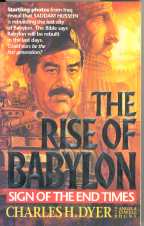 Support for extreme Jewish organisations among
Christian Zionists is also associated with an antipathy for Islam. At the
Third International Christian Zionist Congress, for example, held in 1996
under the auspices of the ICEJ, the following affirmation was endorsed.
Support for extreme Jewish organisations among
Christian Zionists is also associated with an antipathy for Islam. At the
Third International Christian Zionist Congress, for example, held in 1996
under the auspices of the ICEJ, the following affirmation was endorsed.
The Islamic claim to Jerusalem, including its exclusive claim
to the Temple Mount, is in direct contradiction to the clear biblical and
historical significance of the city and its holiest site, and this claim
is of later religio-political origin rather than arising from any Qur'anic
text or early Muslim tradition...165
Similarly, in 1994, Lindsey predicted,
Two religions, Judaism and Islam,
thus are on a collision course with global and heavenly repercussions...
Islam will never accept Jerusalem as the undivided capital of the Jewish
state, and Israel will never agree to give it up. This is the intractable,
insoluble crisis that will soon result in the climax of world history.166
The whole prophetic scenario is in
place. We see the Islamic nations united in mutual hatred of Israel. The
dispute has nothing to do with borders or territory. It has to do with the
existence of Israel and its claim on Jerusalem.167
Such prejudice
not only reinforces stereotypes but ignites racial hatred and becomes a
self fulfilling prophecy for dispensationalists.
6.4 The Battle of
Armageddon
Brickner
is typical in his conviction that, based on his literalist reading of the
Bible, that the rebuilding of the Temple will be associated with the deaths
of most Israelis.
A full two-thirds of the
population of Israel will perish in the ensuing conflict, according to
Zechariah 13:8. The hope of the Jewish people in seeing the glorious
Temple rebuilt will, in fact, lead to their greatest calamity and
suffering.168
Rosen also speculates on such a future scenario,
suggesting the Dome will be destroyed by scuds fired by Israel in an attempt
to implicate Iraq, turning Muslim rage away from Israel and toward Saddam
Hussein.
In truth, the fusillade of
missiles had not all come from Iraq - only the ones which hit Jewish
neighbourhoods. The rest were Scud-class missiles launched by Israelis
from mobile launchers deployed deep in the Judean wilderness, near the
Israeli/Jordanian border. Yitshak Shamir had his revenge.169
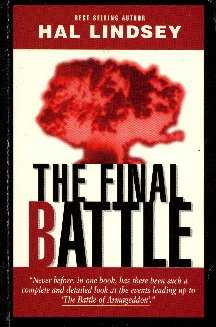
Lindsey describes in graphic detail what this apocalyptic future
will be like.
The Russian force will establish
command headquarters on Mount Moriah or the Temple area in Jerusalem.
Daniel pointed this out when he said: 'And he shall pitch his palatial
tents between the seas [Dead Sea and Mediterranean Sea] and the glorious
holy mount Zion; yet he shall come to his end with none to help him'
(Daniel 11:45 Amplified).170
Christian enthusiasm for the rebuilding
of the Jewish Temple is therefore only part of a wider apocalyptic scenario
of mass destruction in which the writings of prophets like Daniel, Ezekiel
and the Book of Revelation are interpreted literally, allegedly describing
pre-written history.171
7. Conclusions
It has been shown that the Christian belief in, and support for, the
rebuilding of the Jewish Temple arises generally from a premillennial
eschatology and specifically from the novel dispensational distinction
between Israel and the Church combined with, and arising from, an
ultra-literalist and futurist hermeneutic. On the basis of allegedly
unfulfilled Old and New Testament predictions, Christian Zionists are
convinced that a third Temple will be built in place of, or near, the Dome
of the Rock in Jerusalem. They are also convinced that a Jewish priesthood
will once again offer sacrifices and offerings. They also believe this yet
to be built Temple will be desecrated by the Antichrist and replaced by a
fourth Millennial Temple.
It has been shown that this conviction and
the hermeneutic upon which it is based is flawed because it fails to
recognise how Jesus Christ interprets, completes, and fulfils the role of
the Temple with its sacrificial system. The Temple, and the Tabernacle
before it, were indeed the places where God dwelt with his people and where
their sin could be atoned for by sacrifice. The New Testament reveals how
the Temple was, however, an illustration172
a copy173 and
shadow174
for the atoning work of
Jesus Christ who now dwells on earth by the Holy Spirit. The Temple
therefore finds its ultimate significance and fulfilment not in another
man-made sanctuary but in Jesus Christ who is in heaven and in his Church
on earth.175
The Book of
Revelation expressly says that one day the two will be united and the Lord
will dwell with his people and have no need of a Temple.176 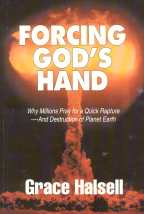
The Christian Zionist preoccupation,
therefore, with locating the site of the Temple, with training priests,
breeding red heifers and funding the Temple Treasury is at best a
distraction from the gospel imperative and at worst promoting apostasy177
Christian support for the
rebuilding of the Jewish Temple is also invariably linked to the political
claims of exclusive Jewish sovereignty over not only the Temple Mount and
Jerusalem but much of the Middle East as well. Whether intentionally or
otherwise, therefore, Christian Zionists are complicit in perpetuating a form
of apartheid as well as the ethnic cleansing of Palestinians from the Occupied
Territories. Many regard this reading of history as questionable, coloured by
a literal exegesis of highly selective biblical passages, profoundly misguided
and essentially racist. Far from demonstrating a ministry of reconciliation to
all nations, which is at the heart of the Christian faith, Zionism perpetuates
religious intolerance and incites ethnic violence. Fuelled by a fatalistic
conviction of an imminent apocalyptic war, Christian Zionists are indeed,
'anxious for Armageddon.'178
1
Reuters, 8th January 2001.
2
http://keshev.org.il/english/reports/harhabayit/index.shtml
3
Anti-Defamation League Press Release, 20 December 1999.
4
Gershon Salomon, The Voice of the Temple Mount Faithful, Summer 5761/2001, pp.
15-17.
5
Nadav Shragai, 'Rabbis call for mass visits to Temple Mount', Ha'aretz, 19
July 2001.
6
'Future Events of the Temple Mount Faithful' The Voice of the Temple Mount
Faithful, The Temple Mount and Land of Israel Faithful, Summer 5761/2001, pp.
22-23.
7
Arutz 7 - Israeli news source affiliated with settler movement - 27 July
2001.
8
For an introduction to Christian Zionism, see Stephen Sizer, 'Christian
Zionism, A British Perspective' in Holy Land, Hollow Jubilee, eds Naim Ateek
& Michael Prior (London: Melisende, 1999), pp. 189-99.
9
David Brickner, Future Hope, A Jewish Christian Look at the End of the World,
2nd edn. (San Francisco: Purple Pomegranate, 1999), p.90.
10
Rabbi Shlomo Chaim Hacohen Aviner, cited in Grace Halsell, Forcing God's Hand
(Washington: Crossroads International, 1999), p. 71.
11
Yisrael Meida, cited in Grace Halsell, Forcing., p. 68.
12
Hal Lindsey, Planet Earth 2000 AD (Palos Verde, California: Western Front,
1994), p. 156.
13
Randall Price, 'Time for a Temple? Jewish Plans to Rebuild the Temple.'
Friends of Israel Gospel Ministry www.foigm.org/img/timetemp.htm
14
John F. Walvoord, 'Will Israel Build a Temple in Jerusalem?' Bibliotheca
Sacra, 125 (April 1968), p.106.
15
Richard N. Ostling, "Time for a New Temple?" Time, (16 October, 1989), p.
64.
16
Randall Price, The Coming Last Days Temple (Eugene, Oregon: Harvest House,
1999), p. 26.
17
Using Google.com on 1st July 2001.
18
Thomas Ice & Randall Price, Ready to Rebuild, The Imminent Plan to Rebuild
the Last Days Temple (Eugene, Oregon: Harvest House, 1992); Randall Price,
Jerusalem in Prophecy (Eugene, Oregon: Harvest House, 1998); The Coming Last
Days Temple (Eugene, Oregon: Harvest House, 1999).
19
Grant Jeffrey, Armageddon, Appointment with Destiny (Toronto: Frontier
Research Publications, 1988); Messiah, War in the Middle East & Road to
Armageddon (Toronto: Frontier Research Publications, 1991); Heaven The Mystery
of Angels (Toronto: Frontier Research Publications, 1996)
20
Lindsey, Planet., pp. 153-67.
21
Tim LaHaye & Jerry B. Jenkins, Are We Living in the End Times? (Wheaton:
Tyndale, 1999); Tim LaHaye & Jerry B. Jenkins, Apollyon: The Destroyer Is
Unleashed (Wheaton: Tyndale, 1999)
22
Dave Hunt, The Cup of Trembling. Jerusalem in Bible Prophecy, (Eugene, Oregon:
Harvest House, 1995)
23
For example, Dallas Theological Seminary and the Moody Bible Institute, Campus
Crusade for Christ and Jews for Jesus.
24
Grace Halsell, 'Militant Fundamentalists Plot Destruction of Al Aqsa Mosque'
Lexington Area Muslim Network, 18 March 2000, www.leb.net
25
Grace Halsell, Forcing God's Hand (Washington: Crossroads International,
1999), pp.63-73.
27
Hal Lindsey, The Final Battle (Palos Verdes, California: Western Front, 1995),
back cover.
28
Lindsey, Planet., p. 156.
29
Hal Lindsey, 'World's fate hangs on 35 acres' FreeRepublic.com 21 February
2001.
30
Hal Lindsey, The Late Great Planet Earth (London: Lakeland, 1970), pp.
56-58.
31
Lindsey, Planet., p. 156.
33
Jews for Jesus review of Ready to Rebuild by Thomas Ice and Randall Price
(Eugene: Harvest House, 1992),
www.store.jewsforjesus.org/books/products/bk154.htm
34
G. H. Pember, The Great Prophecies of the Centuries Concerning Israel and the
Church (London: Hodder & Stoughten, 1902), p. 353.
35
John F. Walvoord, 'Will Israel Build a Temple in Jerusalem?' Bibliotheca
Sacra, 125 (April 1968), p.100.
36
Iain H. Murray, The Puritan Hope: Revival and the Interpretation of Prophecy
(Edinburgh: Banner of Truth, 1971), p. 188.
37
Donald E. Wagner, Anxious for Armageddon (Waterloo, Ontario: Herald Press,
1995), pp. 81, 88. See also Charles Ryrie, Dispensationalism (Chicago: Moody
Press, 1995), pp. 65-71.
38
C. Norman Kraus, Dispensationalism in America (Richmond: John Knox Press,
1958), p. 104.
39
Edward Irving, preliminary discourse, 'on Ben Ezra', The Coming of Messiah in
Glory and Majesty, by Juan Josafat Ben-Ezra a converted Jew, Translated from
the Spanish, with a Preliminary Discourse (London: L.B. Seeley & Sons,
1827).
40
D. W. Bebbington, Evangelicalism in Modern Britain, A History from the 1730's
to the 1980's. (London: Unwin Hyman, 1989), p. 88; Roy Coad, A History of the
Brethren Movement (Exeter: Paternoster, 1968), p. 109.
41
John Nelson Darby, Letters of John Nelson Darby, Volume 1, 1832-1868 (London,
Stow Hill and Bible Tract Depot), p. 6.
42
Clarence B. Bass, Backgrounds to Dispensationalism (Grand Rapids, Michigan:
Eerdmans, 1960), p. 18. See also Loraine Boettner, The Millennium (Grand
Rapids: Baker, 1958), p. 369f.
43
Gary DeMar, Last Days Madness (Atlanta: American Vision, 1997), p.
80.
44
C.I. Scofield, Scofield Bible Correspondence Course (Chicago: Moody Bible
Institute), pp. 45-46.
45
Lewis Sperry Chafer, Systematic Theology, 8 volumes (Dallas: Dallas
Theological Seminary, 1975)
46
L. S. Chafer, 'Dispensationalism,' Bibliotheca Sacra, 93 (October 1936), 410,
417.
47
John F. Walvoord, 'Will Israel Build a Temple in Jerusalem?' Bibliotheca
Sacra, 125 (April 1968), p.100.
48
John F. Walvoord, 'Will Israel Build a Temple in Jerusalem?' Bibliotheca
Sacra, 125 (April 1968), p.102.
49
Robert Clouse, ed. The Meaning of the Millennium (Downers Grove: InterVarsity
Press, 1977)
50
For an introduction to Dispensationalism, see Stephen Sizer, 'Dispensational
Approaches to the Land' in The Land of Promise, eds. Philip Johnson &
Peter Walker (Leicester: IVP, 2000), pp. 142-71.
51
J. N. Darby, 'The Character of Office in The Present Dispensation' Collected
Writings., Eccl. I, Vol. I, p. 94; J. N. Darby, 'The Hopes of the Church of
God in Connection with the Destiny of the Jews and the Nations as Revealed in
Prophecy,' Collected Writings, Prophetic I, Vol. II, p. 363.
52
Ryrie, Dispensationalism., pp. 39-40.
53
Scofield, Scofield., fn. 1, p. 1206.
54
Scofield, Scofield., fn. 2, p. 963.
55
Cornelis P. Venema, The Promise of the Future (Edinburgh: Banner of Truth,
2000), p. 277f.
56
Lindsey, Israel and the Last Days (Eugene, Oregon: Harvest House, 1983), p.
23.
57
Brickner, Future Hope, A Jewish Christian Look at the End of the World,
2nd edn. (San Francisco: Purple Pomegranate, 1999), p. 18.
58
Kenneth Barker, 'Premillennialism in the Book of Daniel' The Master's Seminary
Journal 4/1 (Spring 1993), p. 36.
60
John E. Goldingay, Daniel, Word Biblical Commentary (Milton Keynes: Word,
1991) p. 257. For a fuller critique see Edward J. Young, The Prophecy of
Daniel (Grand Rapids: Eerdmans, 1949), pp. 201-21, and Joyce G. Baldwin,
Daniel, An Introduction and Commentary (Leicester, IVP, 1978), pp.
172-178.
61
Ernst Wilhelm Hengstenberg, Christology of the Old Testament (Florida:
MacDonald Publishing Company, n.d.), pp. 792-930. Young, Prophecy., pp. 203-4;
Goldingay, Daniel., p.268.
62
Rosen., Overture., p. 114. See also p. 166. For a critique of this view see
John B. Taylor, Ezekiel, An Introduction and Commentary (Leicester: IVP,
1969), pp. 250-54.
63
John F. Walvoord, 'Will Israel Build a Temple in Jerusalem?' Bibliotheca
Sacra, 125 (April 1968), p.103.
64
John F. Walvoord, 'Will Israel
Build a Temple in Jerusalem?' Bibliotheca Sacra, 125 (April 1968),
p.103.
65
Lindsey, Planet., p. 158.
66
Lindsey, The Apocalypse Code (Palos Verdes, California: Western Front, 1997),
p. 78.
67
William Hendriksen, The Gospel of Matthew (Edinburgh: Banner of Truth, 1973),
p. 858; Michael Green, The Message of Matthew (Leicester: IVP, 2000), pp.
249-58.
68
Eusebius, 'On the Predictions of Christ' Eusebius, The Ecclesiastical History
and the Martyrs of Palestine (London: SPCK, 1927), 3:7, pp.73-4.
69
Eusebius, Eusebius., 3:5.4 p.69.
70
Flavius Josephus, Jewish Antiquities, The New Complete Works of Josephus
(Grand Rapids: Kregal, 1999), Book 10, Chapter 2.7 (276), p.357.
71
Flavius Josephus, The Jewish Wars, The New Complete Works of Josephus (Grand
Rapids: Kregal, 1999), Book 4, Chapter 3, fn.2, p. 816.
72
Josephus, Wars., Book 4, Chapter 6.3 (388), pp. 825-826.
73
Josephus, Wars., Book 4, Chapter 3.7 (151), p. 812.
74
Josephus, Wars., Book 4, Chapter 5.4 (343), p. 823.
75
Josephus, Wars., Book 4, Chapter 3.10 (162-163), pp. 813-814.
76
Josephus, Wars., Book 4, Chapter 5.1 (313), p. 821.
77
Josephus, Wars., Book 4, Chapter 5.2 (318), p. 822.
78
William L. Lane, The Gospel According to Mark (Grand Rapids: Eerdmans, 1974),
pp.468-69; Hans K. LaRondelle, The Israel of God in Prophecy: Principles of
Prophetic Interpretation (Berrien Springs: Andrews University Press, 1983),
pp. 197-98.
79
Josephus, Wars., Book 6, Chapter 6.1 (316), p. 900.
80
See also R.T. France, The Gospel According to Matthew, An Introduction and
Commentary (Leicester: IVP, 1985), p. 340.
81
Josephus, Wars., Book 6, Chapter 6.2 (346), pp. 901-902
82
DeMar, Last., p. 96. See also Edward J. Young, The Book of Isaiah. 3 vols.
(Grand Rapids: Eerdmans, 1972), 3:520.
83
John Calvin, Commentary on the Book of the Prophet Daniel, trans. Thomas
Myers, 2 vols. (Grand Rapids: Eerdmans, 1948), Vol.2, p.390.
85
Lindsey, Late., p. 54.
86
Lindsey, Planet., p. 104.
87
John F. Walvoord, 'Will Israel Build a Temple in Jerusalem?' Bibliotheca
Sacra, 125 (April 1968), pp.104-5
88
Lindsey, There's A New World Coming, A Prophetic Odyssey (Santa Ana,
California: Vision House, 1973), p. 160.
89
Lindsey, Late., pp. 56-8.
90
Matthew 12:6, 26:61, 27:40; Mark 14:58; 15:29; John 2:19-21.
91
Romans 9:4; 1 Corinthians 8:10, 9:13; 2 Thessalonians 2:4.
93
1 Corinthians 3:16-17; 2 Corinthians 6:16; Ephesians 2:21; 1 Corinthians
6:19.
95
John 2:19, Mark 26:61, 27:40; Mark 14:58, 15:29.
96
Hebrews 9:9, 23, 10:1-3, 11.
100
John F. Walvoord, 'Will Israel Build a Temple in Jerusalem?' Bibliotheca
Sacra, 125 (April 1968), p.104.
101
C.I. Scofield, Scofield Reference Bible (New York: Oxford University
Press, 1945), p. 890.
102
The New Scofield Reference Bible ed. E. Schuyler English (New York:
Oxford University Press, 1967), p. 864.
103
Cornelis P. Venema, The Promise of the Future (Edinburgh: Banner of
Truth, 2000), p. 285
104
Leviticus 2:2, 9, 16.
105
Hebrews 7:14. Venema, Promise., p. 286.
107
Hebrews 2:17; Romans 3:25.
108
Zhava Glaser, 'Today's Rituals: Reminders or Replacements' Issues., 8,
3.
109
Colossians 2:16-17; Hebrews 10:1, 5.
110
Venema, Promise., p. 288.
111
Galatians 3:1-5; 3:13-16; Hebrews 8:13; .
113
John 1:14; 2:19-22; Colossians 2:9.
114
John Noe, The Israel Illusion (Fishers, Indiana: Prophecy Reformation
Institute, 2000), p. 16.
118
John Charles Ryle, Expository Thoughts on the Gospels, St. Matthew (London:
John Clarke, 1954), p. 317
119
Charles Haddon Spurgeon, The Gospel of the Kingdom, A Popular Exposition of
the Gospel According to Matthew (Pasadena: Pilgrim, 1974), first published
1893, p. 216
120
Brickner, Future., p. 137.
121
Lindsey, Planet., p. 156, Final., p. 103.
122
Cited in Price, Coming., pp. 337-42; Tuvia Sagiv, The Hidden Secrets of the
Temple Mount (Tel Aviv, 1993);
http://www.templemount.org/tempmt.html
123
See Asher Kaufmann, 'Where the Ancient Temple of Jerusalem Stood,'
Biblical Archaeology Review 9:2 (March/April 1983) pp 40-59; also, 'Where was
the Temple? The Debate Goes On' March/April 2000)
http://www.bib-arch.org/barma00/temple3.html
124
Randall Price, Coming., pp. 342-4.
125
Leen Ritmeyer, The Temple of Herod (Harrogate, England: Ritmeyer
Architectural Design, 1993); The Temple and the Rock (Harrogate, England:
Ritmeyer Architectural Design, 1996), pp 38-48;
http://dspace.dial.pipex.com/ritmeyer/
126
Price, Coming., pp. 345-54.
127
Lindsey, Late., pp. 56-58.
128
Lindsey, There's., p. 163.
129
Lindsey, Israel., p. 29.
130
Lindsey, Israel., p. 30.
131
Lindsey, Planet., p. 160.
132
Brickner, Future., p. 61.
133
Price, Coming, p. 346.
134
Gershon Salomon, 'The Riddle of the Dome of the Rock: Was it built as a Jewish
Place of Prayer?" The Voice of the Temple Mount Faithful, Summer 5761/2001,
p.13.
135
Randall Price, 'Time for a Temple?' Friends of Israel Gospel Ministry
www.foigm.org/img/timetemp.htm
136
Lambert Dolphin, 'Preparations for a Third Jewish Temple',
http://hope-of-israel.org/3rdjewt.htm
137
Randall Price, 'Time for a Temple?' Friends of Israel Gospel Ministry
www.foigm.org/img/timetemp.htm
138
Ha'aretz, 1 March 1998, cited in Brickner, Future., p. 53.
139
Randall Price incorrectly attributes this story to Time when it actually
appeared in News Week. He also mis-spells one of the contributors names. The
Coming Last Days Temple (Eugene, Oregon, Harvest House, 1999), p. 375.
'Red Heifers' New York Times, 27 December 1998, cited in Grace Halsell,
Forcing God's Hand (Washington: Crossroads International, 1999),
p.65.
140
http://members.aol.com/baryeh/moneycow.html; see also Joe Atkins, 'Biblical
mystery of the red heifer affects farmer in Mississippi' The Daily
Mississippian, 23 July 1998; "Portent In A Pasture? Appearance of Rare Heifer
In Israel Spurs Hopes, Fears", The Boston Globe, Sunday, April 6, 1997, by
Ethan Bronner, pp. 1, 22
Rabbi Chaim Richman, 'The Mystery of the Red
Heifer' http://www.templemount.org/heifer.html
141
Kendall Hamilton (with Joseph Contreras and Mark Dennis), "The Strange Case of
Israel's Red Heifer," Newsweek (May 19, 1997).
142
Moses Maimonides, Commentary on the Mishnah. His exact statements reads:
"...and the tenth red heifer will be accomplished [prepared?] by the king, the
Messiah..;." cited in Randall Price, 'Time for a Temple?' Friends of Israel
Gospel Ministry. Www.foigm.org/img/timetemp.htm See also Rabbi Chaim Richman,
The Mystery of the Red Heifer: Divine Promise of Purity (Jerusalem: Rabbi Chaim
Richman, 1997), pp 64-74.
143
Louis Rapoport, 'Slouching towards Armageddon: Links with Evangelicals'
Jerusalem Post International Edition, June 17-24, 1984; Halsell, Forcing., p.
68.
144
Grace Halsell, Prophecy and Politics, Militant Evangelists on the Road to
Nuclear War (Westport, Connecticut, Lawrence Hill, 1986), pp. 96-97. Halsell,
Forcing., p. 68.
145
Louis Rapoport, 'Slouching towards Armageddon: Links with Evangelicals'
Jerusalem Post International Edition, June 17-24, 1984.
146
Halsell, Prophecy., p. 106.
147
Jay Gary, 'The Temple Time Bomb' Presence Magazine
www.christianity.com/partner
148
Ross Dunn, 'Israel holds disciples of 'Second Coming' cult' Times, 4 January
1999, p. 12.
149
Lindsey, Planet., p. 163.
150
Lindsey, Planet., p. 163.
151
Lindsey, Israel., p. 19.
152
Brickner, Future., p. 60.
153
Jan Willem van der Hoeven, Babylon or Jerusalem? (Shippensburg, Pasadena:
Destiny Image Publishers, 1993), p. 169.
154
van der Hoeven, Babylon., p. 163.
155
Hal Lindsey, The Road to Holocaust (New York: Bantam, 1989). Lindsey accuses
those who oppose dispensationalism of anti-Semitism, '...the same error that
founded the legacy of contempt for the Jews and ultimately led to the Holocaust
of Nazi Germany.' (back page).
156
Rich Robinson, 'Israeli Groups Involved in Third Temple Activities' Jews for
Jesus Newsletter Issue 10, Adar 5753, 1993.
157
Brickner, Future., p. 60.
158
Price, Coming., pp. 616-20.
159
Brickner, Future., p. 61.
160
Zhava Glaser, 'Today's Rituals: Reminders or Replacements' Issues., 8, 3.
161
Nadav Shragai, 'Dreaming of a Third Temple', Ha'aretz, 17 September 1998, p.3.
Cited in Price, Coming., p. 417.
162
Sam Kiley, 'The righteous will survive and the rest will perish' The Times, 13
December 1999, p. 39.
163
Gershon Salomon, 'An Upheaval in the Israeli Government" The Voice of the Temple
Mount Faithful, Summer 5761/2001, p. 6
164
Cited in Halsell, Prophecy., p. 115.
165
International Christian Zionist
Congress Proclamation, International Christian Embassy, Jerusalem. 25-29
February 1996.
166
Lindsey, Planet., p. 155.
167
Lindsey, Planet., p. 216.
168
Brickner, Future., p. 62.
169
Rosen., Overture., p. 140.
170
Lindsey, Late., p. 160.
171
Lindsey, Planet., p. xiii.
172
Hebrews 9:9.
173
Hebrews 9:23.
174
Hebrews 8:5.
175
Hebrews 9:24.
176
Revelation 21:22.
177
Hebrews 10:29; Galatians 1:8-9.
178
Donald Wagner, Anxious for Armageddon (Scottdale, Pennsylvania: Herald Press,
1995)




 Contemporary Christian Zionists who have written on the
rebuilding of a Jewish Temple include Thomas Ice and Randall Price
Contemporary Christian Zionists who have written on the
rebuilding of a Jewish Temple include Thomas Ice and Randall Price Jews for Jesus also endorse and sell 'Ready to
Rebuild: The Imminent Plan to Rebuild the Last Days Temple', by Thomas Ice and
Randall Price. These dispensational writers advocate the rebuilding of the
Jewish temple next to, if not in place of, the Dome of the Rock.
Jews for Jesus also endorse and sell 'Ready to
Rebuild: The Imminent Plan to Rebuild the Last Days Temple', by Thomas Ice and
Randall Price. These dispensational writers advocate the rebuilding of the
Jewish temple next to, if not in place of, the Dome of the Rock. Speculation about the rebuilding of the Temple is largely
the consequence of a futurist literal hermeneutic popularised in the early 19th
Century by Edward Irving
Speculation about the rebuilding of the Temple is largely
the consequence of a futurist literal hermeneutic popularised in the early 19th
Century by Edward Irving One of the most frequently quoted Old Testament passages by
Christian Zionists is Daniel 9:24-27. The sanctuary appears to have already been
destroyed in verse 26 yet sacrifices are brought to an end in verse 27 and then
the 'abomination that causes desolation' desecrates the Temple. On the basis of
a literal chronology in which it is necessary to place a gap of nearly 2000
years between the verses, Lindsey confidently argues,
One of the most frequently quoted Old Testament passages by
Christian Zionists is Daniel 9:24-27. The sanctuary appears to have already been
destroyed in verse 26 yet sacrifices are brought to an end in verse 27 and then
the 'abomination that causes desolation' desecrates the Temple. On the basis of
a literal chronology in which it is necessary to place a gap of nearly 2000
years between the verses, Lindsey confidently argues,
 Moishe Rosen, however, following a futurist literal
reading, claims Ezekiel 43 also refers to contemporary events leading to the
imminent rebuilding of the Temple.
Moishe Rosen, however, following a futurist literal
reading, claims Ezekiel 43 also refers to contemporary events leading to the
imminent rebuilding of the Temple.  Therefore when you see the Abomination which was spoken of
through Daniel the prophet, standing in the holy place [of the rebuilt
temple] (let the reader understand), then let those who are in Judea flee to
the mountains...66
Therefore when you see the Abomination which was spoken of
through Daniel the prophet, standing in the holy place [of the rebuilt
temple] (let the reader understand), then let those who are in Judea flee to
the mountains...66

 The rebuilding of the Temple is meaningless
without at the same time the reintroduction of the Mosaic sacrificial system.
Based on his reading of Daniel, Walvoord, for example, claims,
The rebuilding of the Temple is meaningless
without at the same time the reintroduction of the Mosaic sacrificial system.
Based on his reading of Daniel, Walvoord, for example, claims,

 Having
discovered the true site of the Herodian Temple, Lindsey proceeded to find
scriptural verification for this new location.
Having
discovered the true site of the Herodian Temple, Lindsey proceeded to find
scriptural verification for this new location. 

 The Political Consequences of Rebuilding the Jewish
Temple
The Political Consequences of Rebuilding the Jewish
Temple  Christian Zionists tend to find their solidarity with the
religious right-wing of Israeli society. For example, the Israeli Prime
Minister has spoken at every one of the International Christian Zionist
Congresses held annually in Jerusalem since 1980. Brickner is typical in
lamenting the fact that ten days after Moshe Dyan captured the Old City in
1967, he returned the Temple Mount area to the Islamic authorities.
Christian Zionists tend to find their solidarity with the
religious right-wing of Israeli society. For example, the Israeli Prime
Minister has spoken at every one of the International Christian Zionist
Congresses held annually in Jerusalem since 1980. Brickner is typical in
lamenting the fact that ten days after Moshe Dyan captured the Old City in
1967, he returned the Temple Mount area to the Islamic authorities.
 There is a clear and unambiguous symbiotic relationship
between Christian and Jewish Zionist organisations committed to rebuilding
the Jewish Temple. For example, Jews for Jesus provides information on, and
offers direct Internet links to, eight extreme and militant Jewish
organisations involved in attempts to destroy the Dome of the Rock, rebuild
the Jewish Temple and re-institute Jewish Temple worship and sacrifices.
These include the Temple Institute and Temple Mount Faithful.156
There is a clear and unambiguous symbiotic relationship
between Christian and Jewish Zionist organisations committed to rebuilding
the Jewish Temple. For example, Jews for Jesus provides information on, and
offers direct Internet links to, eight extreme and militant Jewish
organisations involved in attempts to destroy the Dome of the Rock, rebuild
the Jewish Temple and re-institute Jewish Temple worship and sacrifices.
These include the Temple Institute and Temple Mount Faithful.156 Salomon has, however, become increasingly provocative in his
assertions that the Dome of the Rock must be destroyed. Speaking at the
Jerusalem Christian Zionist Congress in 1998, Salomon insisted,
Salomon has, however, become increasingly provocative in his
assertions that the Dome of the Rock must be destroyed. Speaking at the
Jerusalem Christian Zionist Congress in 1998, Salomon insisted,

 Support for extreme Jewish organisations among
Christian Zionists is also associated with an antipathy for Islam. At the
Third International Christian Zionist Congress, for example, held in 1996
under the auspices of the ICEJ, the following affirmation was endorsed.
Support for extreme Jewish organisations among
Christian Zionists is also associated with an antipathy for Islam. At the
Third International Christian Zionist Congress, for example, held in 1996
under the auspices of the ICEJ, the following affirmation was endorsed.

